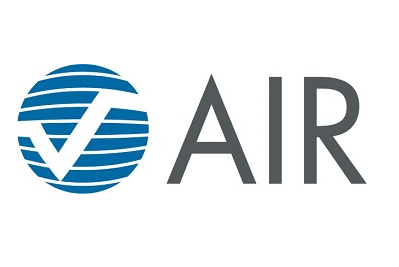Catastrophe modelling firm AIR Worldwide has estimated that the global modelled insured average annual loss (AAL) from catastrophes worldwide is about US $92 billion.
 The firm released the figure as part of its 2019 Global Modeled Catastrophe Report, which detailed key loss metrics from AIR’s global industry exceedance probability curve (EP) curve.
The firm released the figure as part of its 2019 Global Modeled Catastrophe Report, which detailed key loss metrics from AIR’s global industry exceedance probability curve (EP) curve.
In the report, AIR also recorded the 1% aggregate exceedance probability insured loss at nearly $288 billion.
This is more than double the record losses seen in 2017 from Hurricanes Harvey, Irma and Maria and other natural catastrophes.
The 2019 report derived its loss metrics from the most current suite of global property and crop models from AIR as well as databases of property values for more than 110 countries, although it excluded losses from AIR’s pandemic, cyber, and casualty models.
AIR analysts noted that global economic catastrophes have continued to vastly exceed insured losses, depending on the region and peril.
While this protection gap is often though of as a problem confined to the developing world, the two earthquakes that struck Southern California in July highlighted the extent of the issue even in highly developed insurance markets, as only about 15% of California homeowners are covered for this peril.
“While the global insurance industry continues to shine a light on the protection gap, our analyses indicate there’s still work to be done to address the disparity between economic and insured losses,” said Bill Churney, President at AIR Worldwide.
“With modeled average annual loss at less than a quarter of the global economic estimate, we’re not seeing a significant narrowing trend,” he continued.
“History has shown that higher insurance take-up allows society to recover more quickly from extreme events, and AIR will continue to work with the insurance and reinsurance industry, businesses, governments, and non-governmental organizations to reduce the protection gap.”
Executive Vice President Rob Newbold also commented: “With four months left in 2019, there’s still the possibility of experiencing significant insured losses. In 2018, the top three insured losses globally were caused by events that occurred after September 1: the Camp Fire, Hurricane Michael, and Typhoon Jebi.”
“With the insight provided by AIR’s global suite of models, companies can pursue profitable expansion in a market that’s ever more connected and amid regulatory environments that are increasingly rigorous,” Newbold added.
“The ability to take a comprehensive global view can give insurers and reinsurers greater confidence that the risk they’ve assumed is risk they can afford to take.”


